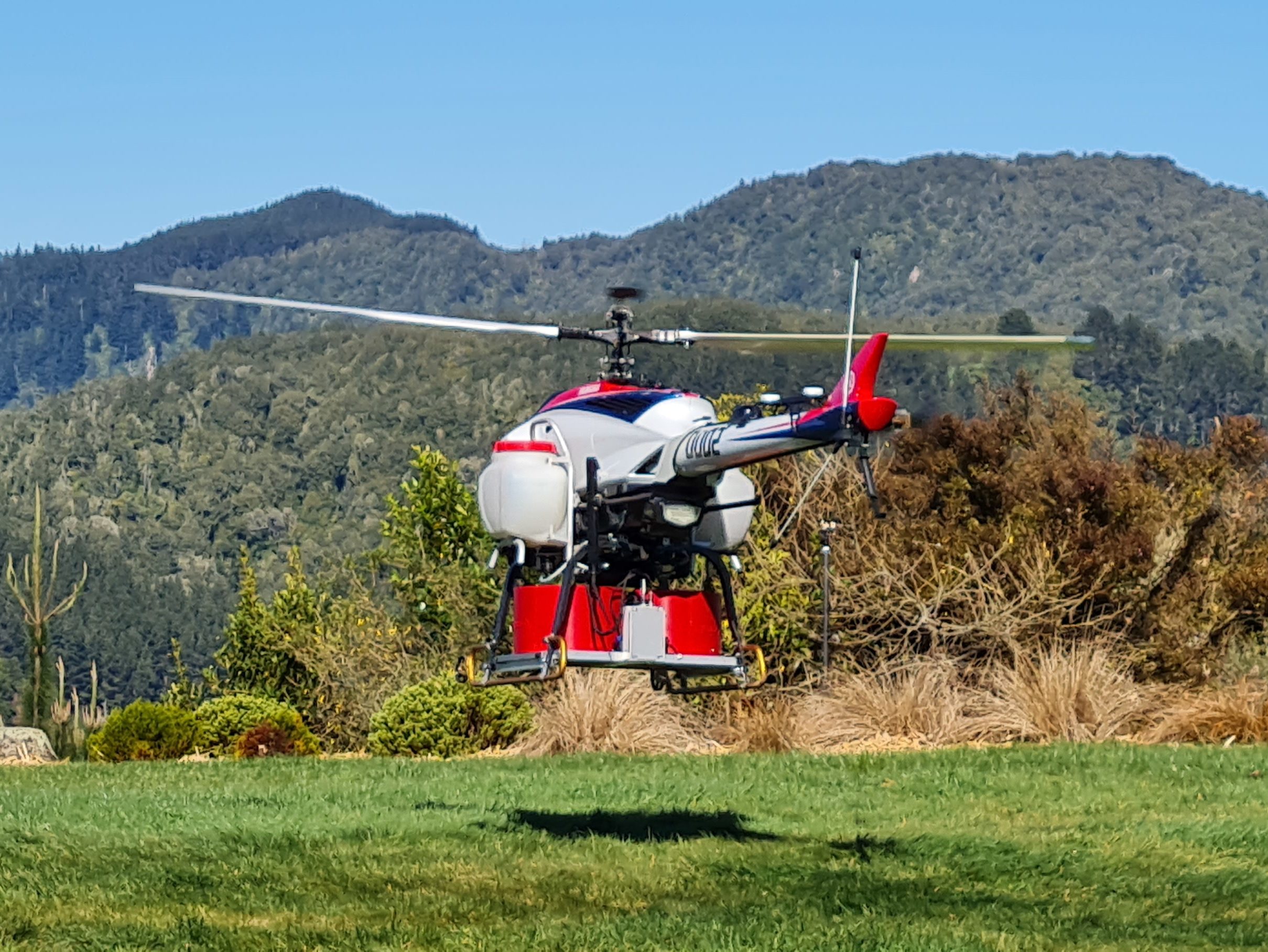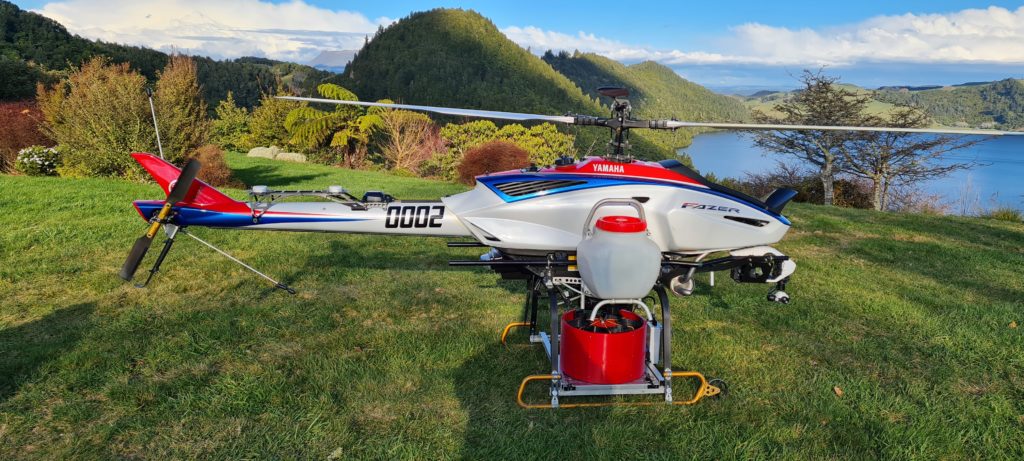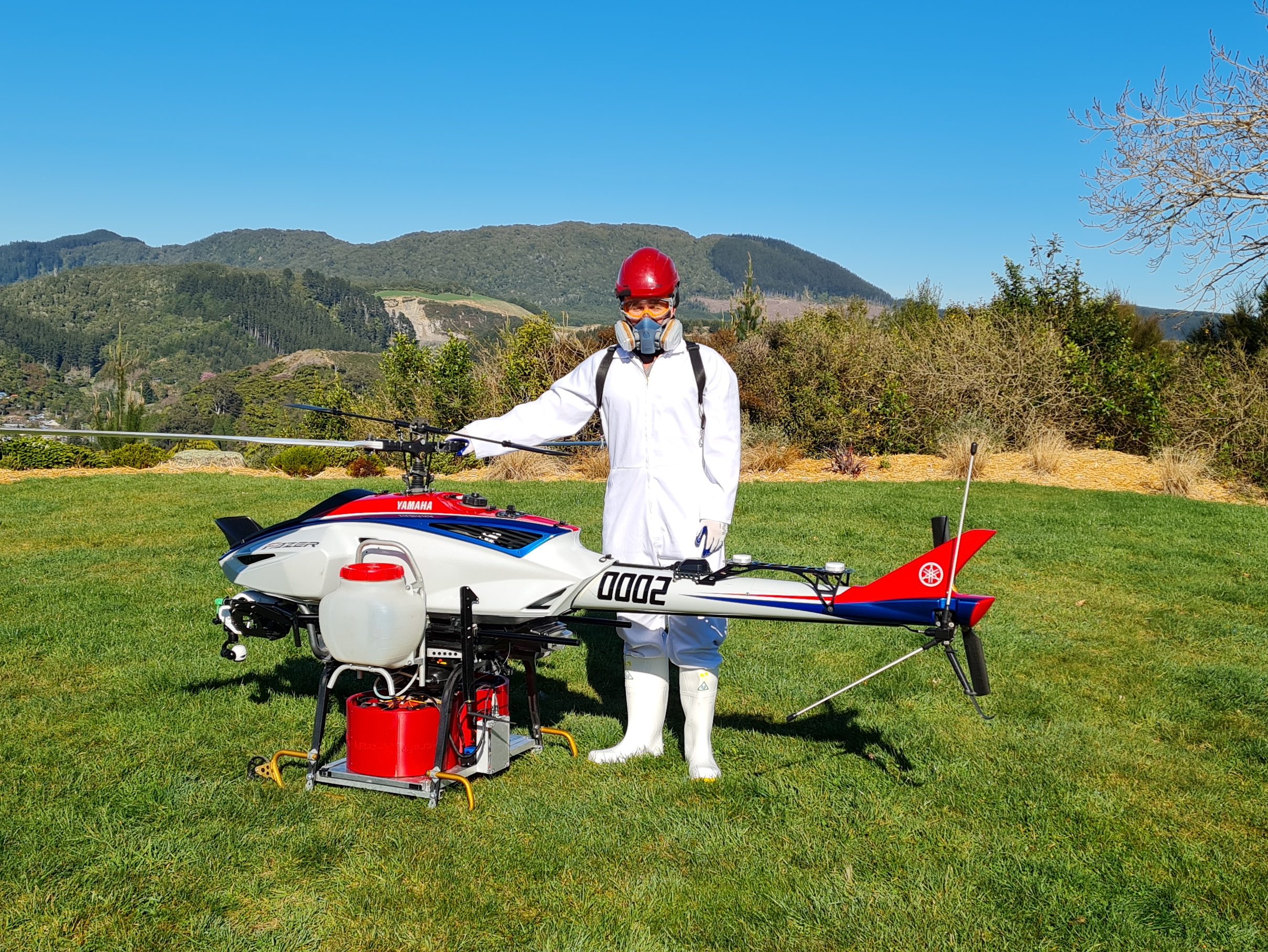Boots on the ground and 1080 applied over large areas can control about 95 percent of possums, rats and stoats. But what about that last 5 percent? Craig Morley and Philip Solaris believe precision drone technology is the solution to bridge that elusive gap. And they’ve been developing drones, bait pods and sensor technology to do just that.

The predator free movement boasts many crafty kiwis and innovative entrepreneurs working towards a shared goal. Craig and are two of these clever folk. Their drone technology is currently being trialled and they have their sights on even bigger ambitions. We caught up with them to talk tech, and hear about their latest achievements.
The many tools needed to achieve eradication

Imagine a land humming with birds, crawling with lizards, and lush with native plants. When dedicated volunteers and conservation workers lace up their boots in the morning, this is the vision that gets them out the door.
And when combined with large landscape scale control, this essential mahi is making an incredible difference to our native bush and wildlife.
However, these methods often may not remove an area of all introduced predators, with some 5 percent evading control practices.
Current tools for applying 1080 over large areas require large buffer zones to avoid waterways, wāhi tapu, and private land. The problem is, these zones become havens for the remaining introduced predators. Uncontrolled, they breed and repopulate the surrounding areas.
So, how do you get areas to 100 percent eradication? With some new tech and new ways of thinking.
Meet Craig and Philip – partners in precision
Craig Morley has dedicated his life to predator control. He did his PhD on introduced predators and worked for the Department of Conservation (DOC) in Northland (Te Tai Tokerau) as a biodiversity manager. Now, he works for Rotorua’s Institute of Technology Toi-Ohomai as an Associate Professor of Resource Management – inspiring the next generation to care for nature.

Chief Executive of X-craft Philip Solaris is a precision specialist with a passion for nature. Philip and the team at X-craft have an impressive track record. They’ve developed high-tech solutions for companies like the World Bank and the World Wildlife Fund.
And, here at home, they’ve worked with local conservation organisations and won awards for their innovations in predator control technology. Philip says they love problem solving and are experts in “extreme precision in very difficult environments.” Together, they make a well-rounded entrepreneurial team.
A new project takes flight
So how did Craig meet Philip?
Craig says he “got keen on drones” back in 2013, when he started thinking about what drones could offer the predator free movement.
“I’ve witnessed first-hand the challenges of trying to deliver toxins via trekking into remote places. You need to cut or maintain tracks – often there’s some risk to people’s safety in difficult terrain. And frustratingly, the tracks you cut can aid introduced predators in navigating the bush.
“What’s more, while broad toxin baiting and trapping are excellent knock-down strategies, getting to eradication is very, very challenging with these strategies alone – thanks to the buffer zones they require.
“Drones offered a way to neatly solve both problems. But only if the tech is precise and effective,” he says.
Looking for partners to help him develop the technology needed, he came across X-craft.
Craig says he approached Philip about his “crazy idea” to use drones to control predators in tricky terrain.
“It’s literally, excuse the pun, flown from there,” he says.
AGMARDT and Toi Ohomai provided the initial seed funding. And they teamed up with Napier based Aerospread Technologies to develop an exciting new predator control drone that takes precision to a new level.
Not your average drones
So what makes their drones different?
The duo’s drones are all about accuracy. With carefully programmed flight paths, the drones can navigate complex waterways, dense bush, and steep ravines – all the areas currently too tricky or too time consuming to manage.
The drones use a sophisticated guidance system capable of pin-point deployment to hit targets within a few metres, anywhere at any time. This is done by linking the drones autopilot system with GPS positioning using Global Navigation Satellite System-aided technology as well as other computer-based calculations.
However, for them it’s not about where they deploy the bait from, but their precision and accuracy on the ground.

Philip says, “Anyone can drop things from a drone. But it’s the accuracy on the ground – where the target is – that counts. Achieving this accuracy isn’t as easy as it sounds.”
To further this precision, the drones drop bait in a contained fashion, using edible (and tasty!) biodegradable pods that break open when they hit the ground. Even in the thickest tangle of bush, the pods land within 0-2.5 metres of their target.
They’re cost and time effective too – they can drop 120+ bait pods in three hours. And no terrain is out of reach. The drones are easy to transport and can take off from pretty much anywhere.
So far, they’ve tested their drones in trial sites with excellent results. Because the drops are all GPS located, it’s easy to do follow up surveys on the ground to see if the bait pods have been eaten. The team found confirmed declines in possum and rodent numbers in the trial sites.
Data is power
While the precision bait drops are a key part of their design, Craig and Philip have further ambitions. Precise drops mean that precise data is also within reach. To collect this data, they’re developing sensor pods that could be dropped at the same time as bait or independently.
Much like the bait pods, the sensor pods are specially designed to attract introduced predators – by using biodegradable materials that are irresistible to their target species.
The sensor pods use artificial intelligence to make sense of the sounds and movements around them. Craig says, “Each animal has a different signature.” This programming allows them to locate areas of high – or no – activity. They can also tell which type of animals are where.
Drones fly over the pods and hoover up the data, creating valuable maps and information for future bait drops.

“Data is power,” Philip says. “And it’s really the only way to quantify the effectiveness of what you’re doing.”
While the sensor technology is still in the research and development stage, Craig and Philip hope to have it up and running soon. In the future, they believe sensor pods will be limited to areas of high activity, making the process more efficient and reducing the number of baits needed.
The system would also be very flexible. It could be scaled up or down to suit different projects in different areas – or adapted to focus on different predator species. Craig and Philip are both excited about the possibilities the sensor pods would open up for research and development.
The system might sound complex, but it could make controlling introduced predators much simpler. “The key is to reliably collect robust, accurate data,” Philip says. “Because the ability to accelerate your effectiveness grows with the knowledge you’re gaining.”
Want to help?
Craig and Philip believe the meticulous precision of their drones could hasten the Predator Free 2050 vision.
But there are some hurdles to overcome first. Craig and Philip are looking for partners to support their mission. They also need groups to run trials with interested predator control groups.
If you’re keen to get involved, contact Craig at [email protected]
With the right backing, they could be ready to take off within a year. These drones could plug the gaps that’ll bring the birdcall back.
The sky’s the limit.

